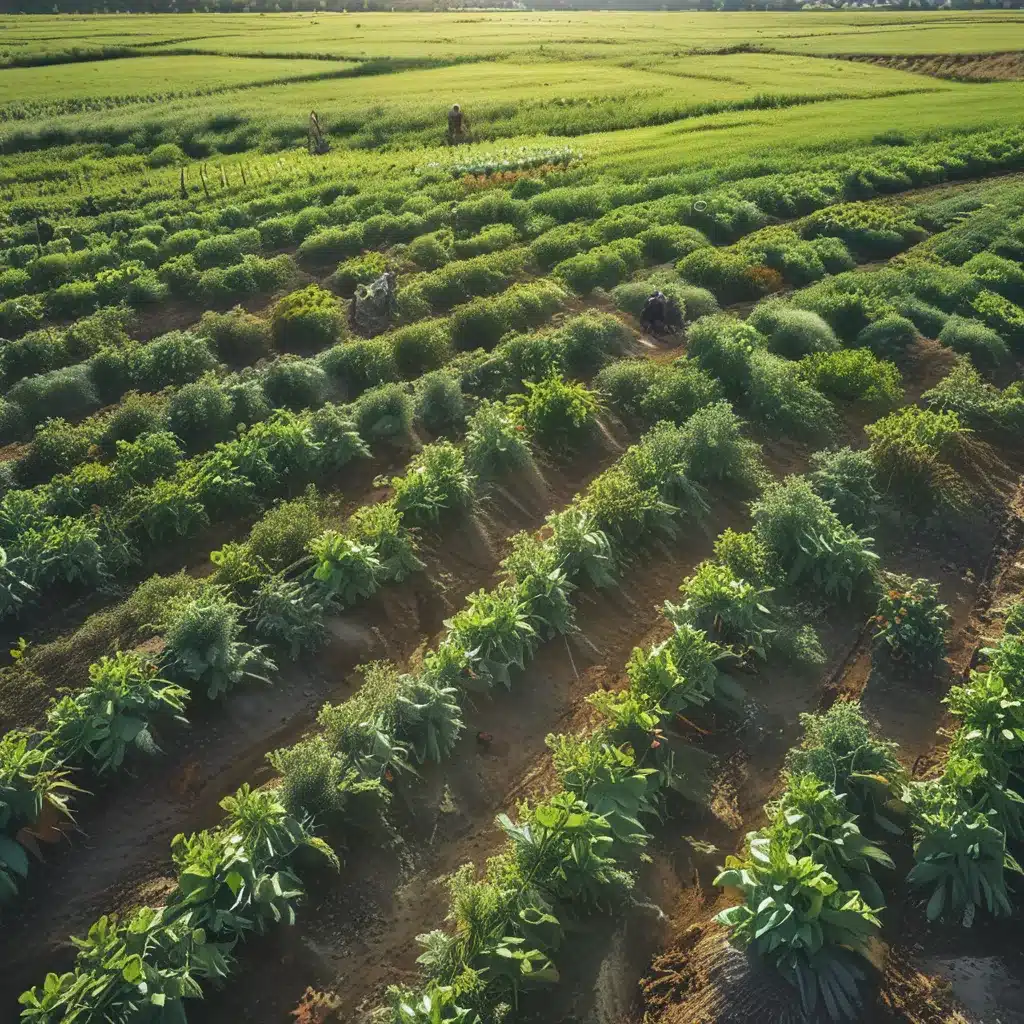
Imagine a world where the food on your plate isn’t just nourishing your body, but also healing the very earth it came from. That’s the future I envision, and it’s what drives my passion for regenerative agriculture. As a lifelong farmer and a proud member of the Thornapple CSA community, I’ve dedicated my life to exploring innovative ways to cultivate the land in a way that benefits both people and the planet.
The Urgent Call for Change
The challenges facing our food and agriculture systems are daunting, but also present immense opportunities. As the world’s population continues to grow, we’re tasked with the monumental challenge of feeding more people while simultaneously addressing the devastating impact our current practices have on the environment.
According to McKinsey, the agri-food sector accounts for a staggering 30% of global greenhouse gas emissions. That’s a sobering statistic, but it also highlights the critical role our industry can play in turning the tide on climate change.
Imagine if we could transform our farms into carbon sinks, actively removing greenhouse gases from the atmosphere and locking them away in the soil. Well, my friends, that’s precisely what regenerative agriculture is all about. By embracing innovative farming methods, we can not only feed the world, but also heal the planet.
Regenerative Agriculture: A Holistic Approach
At the heart of regenerative agriculture is the recognition that the land is a complex, interconnected system. It’s not just about maximizing crop yields or livestock production – it’s about nurturing the entire ecosystem, from the microbes in the soil to the diversity of plant life above ground.
One of the key principles of regenerative agriculture is the use of cover crops. These are plants that are grown primarily to improve soil health, rather than for direct human or animal consumption. By keeping the soil covered year-round, cover crops prevent erosion, enhance nutrient cycling, and promote the growth of beneficial microorganisms.
But the benefits of regenerative agriculture go beyond just the soil. By implementing practices like agroforestry, which integrates the cultivation of trees and shrubs with crops or livestock, we can also support biodiversity and create natural carbon sinks. Imagine walking through a lush, vibrant landscape where crops, trees, and wildlife coexist in perfect harmony.
The Ripple Effect of Regenerative Farming
The impact of regenerative agriculture extends far beyond the farm gates. By implementing these innovative practices, we can not only sequester carbon and improve soil health, but also address a host of other pressing environmental issues.
Take water conservation, for example. Conventional agriculture is a major contributor to freshwater depletion, with irrigation accounting for 70% of global water withdrawals. But by incorporating techniques like no-till farming and using cover crops, we can dramatically reduce our water usage while also improving water quality.
Another critical area is biodiversity. As McKinsey notes, the food and agriculture sector has a significant impact on biodiversity loss. By embracing regenerative practices that promote diverse and thriving ecosystems, we can help to reverse this alarming trend.
The Business Case for Regenerative Agriculture
You might be wondering, “But what’s in it for me? Isn’t this all just an expensive and time-consuming endeavor?” Well, my friends, the truth is that regenerative agriculture presents a compelling business case for farmers, food producers, and even investors.
For starters, the demand for sustainably produced food is skyrocketing. Consumers, particularly younger generations, are increasingly willing to pay a premium for products that align with their values. By positioning your farm or business as a leader in regenerative agriculture, you can tap into this growing market and command higher prices.
But the financial benefits extend beyond just consumer demand. According to McKinsey, the potential for carbon sequestration through regenerative practices is massive, with the ability to remove up to 12 gigatons of CO2 annually. And with the rise of voluntary carbon markets and government incentives, this represents a significant new revenue stream for farmers and landowners.
Overcoming the Challenges
Of course, transitioning to regenerative agriculture isn’t without its challenges. Farmers and businesses alike may face barriers such as upfront costs, unfamiliar practices, and the need to change deeply ingrained habits.
But here’s the thing: the agricultural community is already stepping up to the plate. Organizations like UNDO are leading the charge on innovative solutions like enhanced rock weathering, which can help to accelerate the removal of carbon from the atmosphere and enhance soil health.
And let’s not forget the power of collaboration. By working together as a community, sharing knowledge, and supporting one another, we can overcome these hurdles and create a more sustainable future for all.
A Vision for the Future
As I look ahead to the future, I can’t help but feel a sense of excitement and optimism. Imagine a world where our farms are not just productive, but also restorative. Where the food we grow not only nourishes our bodies, but also heals the very land it came from.
It’s a future where we’re not just reducing our environmental impact, but actively reversing it. Where the carbon dioxide we release is captured and sequestered in the soil, where biodiversity thrives, and where our precious water resources are conserved.
This isn’t some distant, utopian dream – it’s a future that’s within our grasp. All it takes is a willingness to embrace change, to think outside the box, and to work together as a community. And that, my friends, is precisely what the Thornapple CSA and the regenerative agriculture movement are all about.
So, who’s with me? Let’s roll up our sleeves, get our hands dirty, and start regenerating the land for a greener tomorrow. The future of our planet depends on it.



